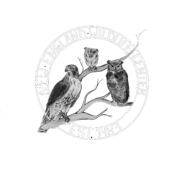All living, breathing beings need homes. For many wild animals that means a nest of some type. In the wild you will see nests on the ground, in the trees, under the ground, or even on building structures.
Some of the larger mammals will nest on the ground or close to the ground. Raccoons and skunks may climb into cavities in trees, or burrow into brush and leaf piles to stay warm. They also may take a bolder step and move into attics and chimneys. They do not make the best house guests, and it is better to try to get them to leave before they have their babies.
Squirrels are known for making large leaf and twig nests up in the crook of a tree. They also enjoy nesting in high tree cavities lining their nest with dried leaves, bark or fur. The nests are about one foot in diameter and quite sturdy. They too may decide that the inside of a building is the best way to go for a cozy winter hide -away.
Rabbits nest almost directly on top of the ground usually in an area with vegetative growth, but many times just dig up a small patch in the middle of the lawn and settle in there. It is difficult to see a rabbit nest even when you are looking for them. They dig under a small patch of grass or ground cover and make a small, shallow, indentation and line it with fur. These nests are easily damaged by landscaping and lawn mowing and by just about any animal in the area looking for a bite to eat.
Chipmunks burrow and make extensive tunnel systems underground. They have more than one entrance/exit and separate rooms for sleeping, food storage and bathroom needs. Because of this extensive system, chipmunks always need to be released back where they came from. Rats and mice can also tunnel underground, and may nest there but generally they continue on into a nice dry basement.
When people think of nests, they first think of birds. Massachusetts has 504 species of birds and almost as many types of bird nests. From the enormous Osprey Pterodactyl -looking nest high on a wooden pole to a hummingbird nest the size of a walnut, 10-90 feet up in a tree, and everything in between. Some nests are lined with mud, some with fur, and some like mourning doves nest are barely a few sticks thrown together in precarious places like low branches or gutters on a house. The Baltimore Oriole who arrives in May, builds an elongated, oblong nest that hangs from a tree limb that is rarely spotted until the leaves have fallen off. The most common bird in Massachusetts is the Black Capped Chickadee, our state bird. Chickadees make nests out or moss and rough materials and line it with fur. They are pretty small at only 2” across.
Birds sometimes surprise us and also nest in bird boxes that we put around our yard and lovingly maintain. Your landscaping depends on what type of bird will come to your house. Finches, Sparrows, Bluebirds, robins, woodpeckers and wrens frequently will nest in bird houses .
Hornets and Wasps also make nests or hives. They are paper like structures made by chewing wood pulp and mixing it with their saliva. They build these hives where there is plenty of shade and protection from the elements, generally attached to some type of building structure. Depending on the species they also can nest on the ground or in the trees.
The Cape Wildlife Center is open to treating any and all of these species year-round, seven days a week. Although I can’t say I have ever seen a wasp brought in. For the keen observer, nests can be seen all year long, sometimes in the most unlikely places, and finding one can provide a moment of pure joy. So, think about all our animals preparing for the arrival of their babies by working hard to make the strongest and safest home for their family that they know how.
To learn more about the Cape Wildlife Center or help in their mission, visit www.capewildlifecenter.com or call 508 362-0111. Stop in to visit our gift shop open 7 days a week 9-4.
Caryn Ritchie is the volunteer coordinator for the Cape Wildlife Center and holds both a Massachusetts rehabilitator’s license and a federal permit to rehabilitate migratory birds.

Recent Comments